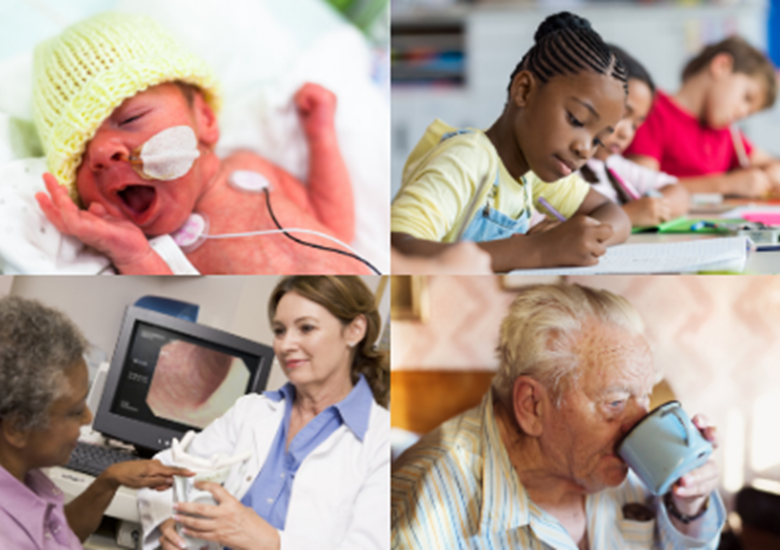Speech and language therapists listen to and learn from people with swallowing and communication needs, so that their voices are heard and we can support them in living well.

IASLT is committed to playing its part in ensuring that the voice of people who have communication disorders is heard in our society.
Speech and Language Therapists and IASLT have identified the need to recognise and remove the barriers that prevent people with communication disorders from participating fully in our communities.
IASLT is a member of the International Communication Project (ICP) which promotes communication as a human right. Learn more about the ICP here.
Providing assessment and support to children and adults who have feeding, eating, drinking and swallowing (FEDS) difficulties is also part of the speech and language therapist’s professional role.
We support our members who continually strive to provide holistic, evidenced-based assessment and support to diverse groups of people with communication and FEDS needs.
By advocating for and educating society to understand, embrace and respond well to all those with communication and swallowing needs, we strive to create a better world for everyone.
Speech and language therapists work with people across the lifespan, in a wide variety of settings to support their communication and swallowing needs. The list below is not exhaustive.
Attention Deficit Hyperactivity Disorder (ADHD) and Communication
Children, young people and adults with Developmental Language Disorder ( DLD)
Children and adults who for a number of reasons require augmentative and alternative communication (AAC) systems.
Swallowing disorders, known as dysphagia ( pronounced dis-fay-dya) affects a person’s ability to safely swallow drinks, food and medication. It can impact people across the lifespan.
Supporting people with progressive and non-progressive neurological conditions, such as Motor Neuron Disease, Multiple Sclerosis, Parkinson's Disease, Dementia, Stroke, & Acquired Brain Injury
Infants born with cleft lip and / or palate or other craniofacial problems.
Children, young people, and adults with a range of mental health difficulties which impact on their communication and swallow.
Supporting multilingualism and multiculturalism across the lifespan.
Parents of twins/multiples often ask- will my children be slower to talk than their peers?
Supporting school and community development projects that create a social environment where children have the opportunity to develop strong speech, language, communication and literacy.
Helping people who have problems with their voice such as persistent hoarseness.
Children and young people whose speech / language or communication skills appear to be developing at a slower rate and / or following a different pattern to their peers.
Children and young people with neurodevelopmental differences such as Dyslexia, Autism or Verbal Dyspraxia.
Acquired communication and swallowing difficulties due to cancer for example, head and neck or lung cancer
Children, young people, and adults with intellectual disabilities, physical and sensory disabilities who may also have communication and swallowing needs.
Supporting babies and their families in neonatal care units who need support to establish sucking, swallowing and feeding patterns.
Children, young people and adults who seek support to manage a stammer / stutter with greater ease and confidence.